Notre-Dame Cathedral’s Remarkable Fire Restoration Shown Off In Houston — This Is No Ordinary Immersive Experience at MFAH
Fly Through a Legendary Historic Landmark
BY Leslie Loddeke // 12.04.24Notre-Dame Cathedral's intricate restoration is on display in a unique MFAH show. (Ars Electronica. Image courtesy MFAH)
After five years under wraps during its restoration, the indomitable Notre-Dame Cathedral of Paris has finally overcome its April 2019 trial by fire, with the iconic legendary landmark set to reopen and show off its beautifully rejuvenated features to the public in the City of Lights this weekend. Now in Houston, a special opportunity to learn the story behind the story of this epic, historic restoration beckons.
A recent CBS News’ 60 Minutes program highlighted the upcoming grand reopening (set for this Saturday, December 7), revealing a resplendent picture of the historic cathedral’s transformed appearance. Finally, viewers could see for themselves that the world-revered, 860-year-old monument is fully, even gloriously, restored after the devastating fire. The roof has been replaced, the nave cleared of burned wood and stone rubble, the interior cleaned of soot and centuries of grime.
The ambitious declaration of France’s president Emmanuel Macron that the restoration would be accomplished in five years, and Notre-Dame would look more beautiful than ever, has been met. Monsieur le President hailed the achievement as “a sort of metaphor of what societies, and especially the world’s democracies, need: Make possible the unthinkable.”
Behind this vivid picture of an architectural coup, a veritable miracle of precision artistry, lie a myriad of unseen guiding lights: three-dimensional laser scans of the cathedral recorded long before its fiery crisis by an art history expert. The significance of this hidden apparition emerges in an intriguing new, high-tech installation at the Museum of Fine Arts, Houston.
MFAH visitors can check out “Notre-Dame Cathedral: An Immersive Experience,” an installation that brings to life a virtual, three-dimensional model of the world-revered architectural icon, designated as a World Heritage Site. The unique MFAH experience, which takes place in the Law Building’s Cullinan Hall through January 5th, was created by Ars Electronica in partnership with French startups Iconem and Histovery to commemorate the historic occasion of Notre-Dame Cathedral’s reopening.
“It is difficult to exaggerate the role Notre-Dame plays in the public imagination, from its iconic architecture, emblematic of the Northern Gothic style, to its magnificent stained-glass rose windows,” MFAH director Gary Tinterow says. “When fire erupted five years ago, millions of people around the world grieved the loss of a monument that had personal significance to each of them.
“Happily, the cathedral has been restored, and now Houstonians can participate in this ethereal dream-like depiction based on laser scans of the building taken before the fire.”
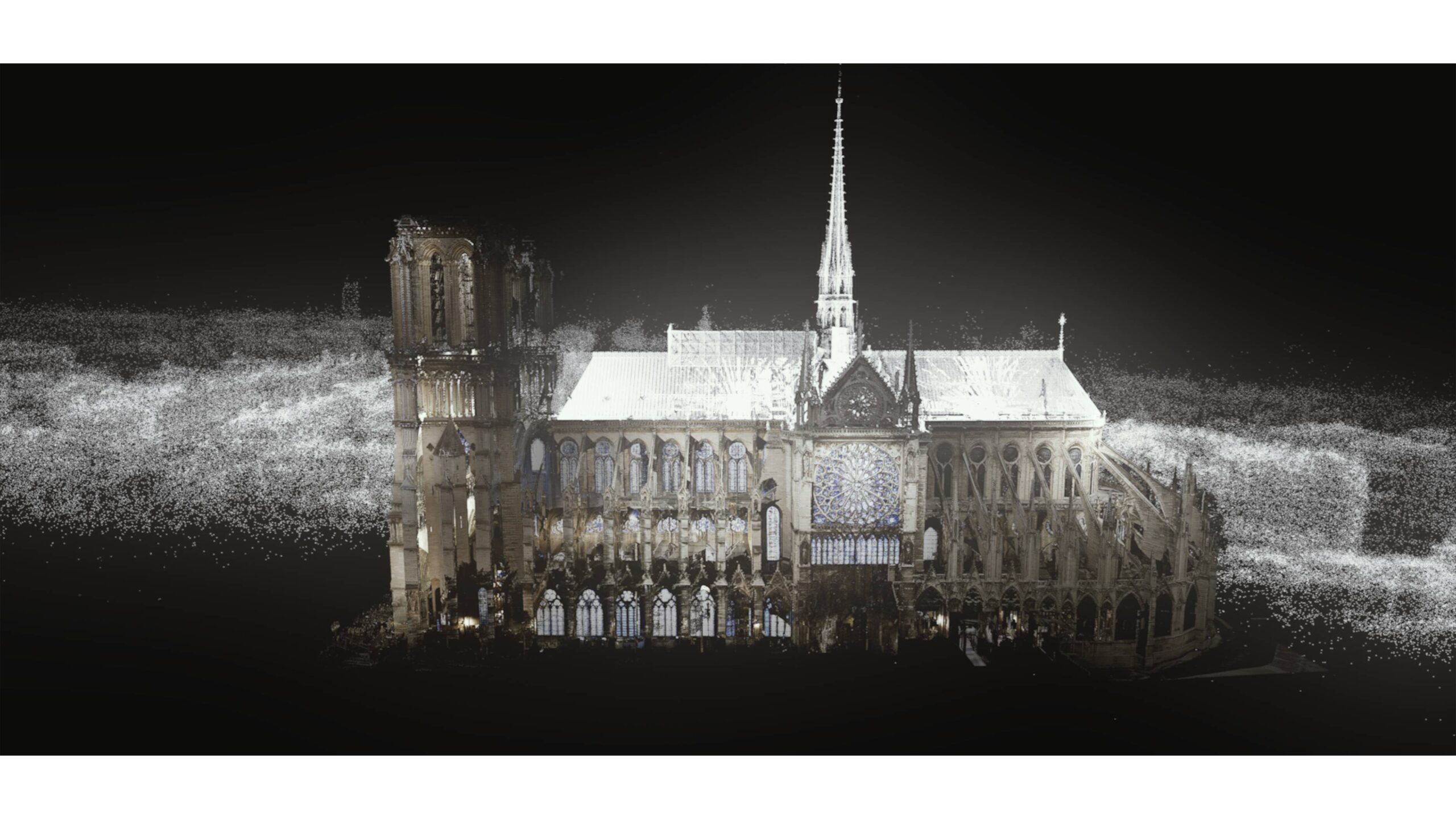
The MFAH presentation takes visitors on a brief digital walkthrough – and in many cases, a fly through, soaring to the lofty heights of the interior — of the legendary architectural features of the cathedral. The presentation employs point cloud data compiled by the late, renowned Belgian art historian and Vassar College professor Andrew Tallon. Tallon created three-dimensional laser scans of the cathedral in 2010 that reportedly proved instrumental in guiding its reconstruction, in addition to additional scans and 3D material by Histovery.
“As if by miracle, Andrew Tallon, a man who was obsessed with Gothic architecture, had scanned the entire cathedral, floor to ceiling, inside and out, with LiDAR and photographs. His scan showed details with such fidelity that it was being used to convince 23 European countries to do similar scans of all their heritage buildings should — perish the thought — some sort of catastrophe befall them,” Roopinder Tara wrote in an article eloquently describing Tallon’s contribution to the restoration on Engineering.com.
Tragically, Andrew Tallon died at age 49 after a three-year battle with brain cancer on November. 16, 2018. But his remarkable achievement, using lasers to digitally map Notre-Dame, live on.
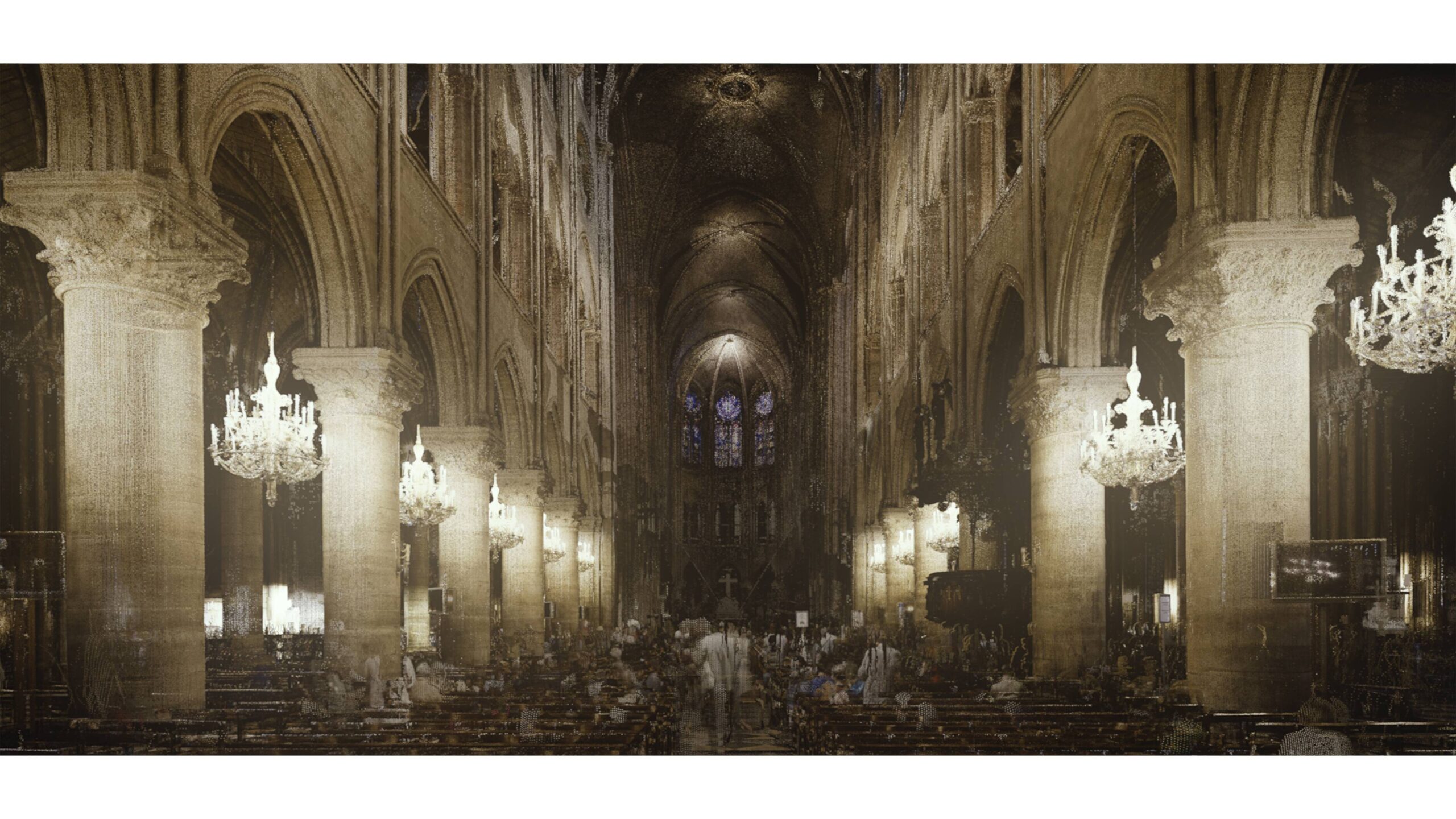
In his wake, a team of nearly 2,000 creative professionals (called “compagnons” or companions) — including conservators, carpenters, glassmakers, locksmiths, engineers and scaffolding experts — worked diligently over the next five years on their individual tasks on site and in workshops across France to restore Notre-Dame.
Notre-Dame In Houston
In Houston, the MFAH installation comprises projections surrounding viewers across three monumental walls in Cullinan Hall. The brief (14 minute) presentation replicates the experience of approaching the cathedral from its plaza as light shifts from daytime to dusk to evening, with views of its façade from three sides. Entering the nave. Illuminated by candlelight. And viewing the stained-glass windows.
That sequence is followed by visuals of the fire and its aftermath. The final sequence illuminates Notre-Dame Cathedral’s reconstructed spire, topped by a cross and golden rooster, the national emblem of France and a symbol of Christianity.
This immersive experience, albeit relatively brief, offers visitors a meaningful glimpse of the important role of new technologies in preserving and communicating humanity’s cultural heritage. The ghostly projections enable viewers to perceive the bones underlying the now refurbished beauty of the ancient Dame, precisely mapped at one moment in time for the benefit of countless successors and appreciative observers years and centuries later.
The presentation is organized by the MFAH in collaboration with Iconem, Histovery and Ars Electronica, and supported by Villa Albertine, Alliance Francaise de Houston and Archeology Now. Notre-Dame Cathedral: An Immersive Experience is showing at MFAH through January 5th.
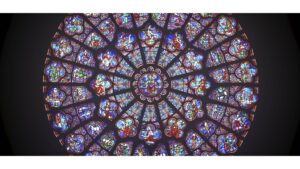
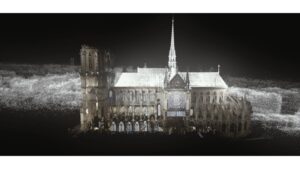
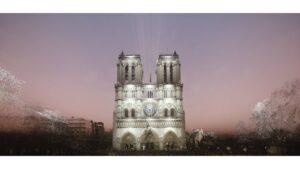
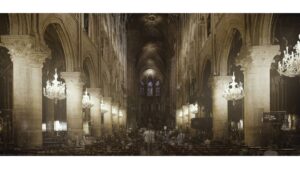

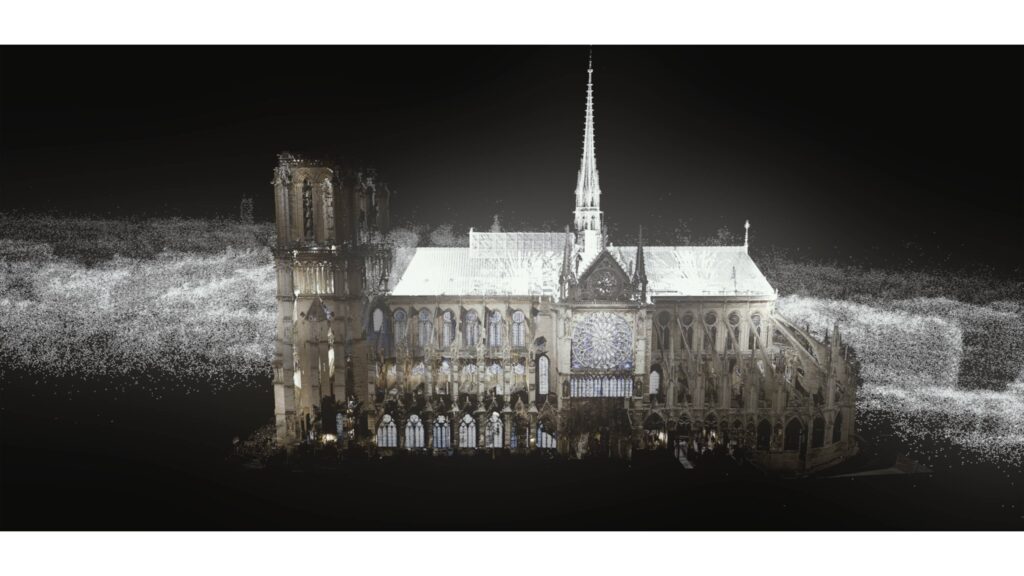
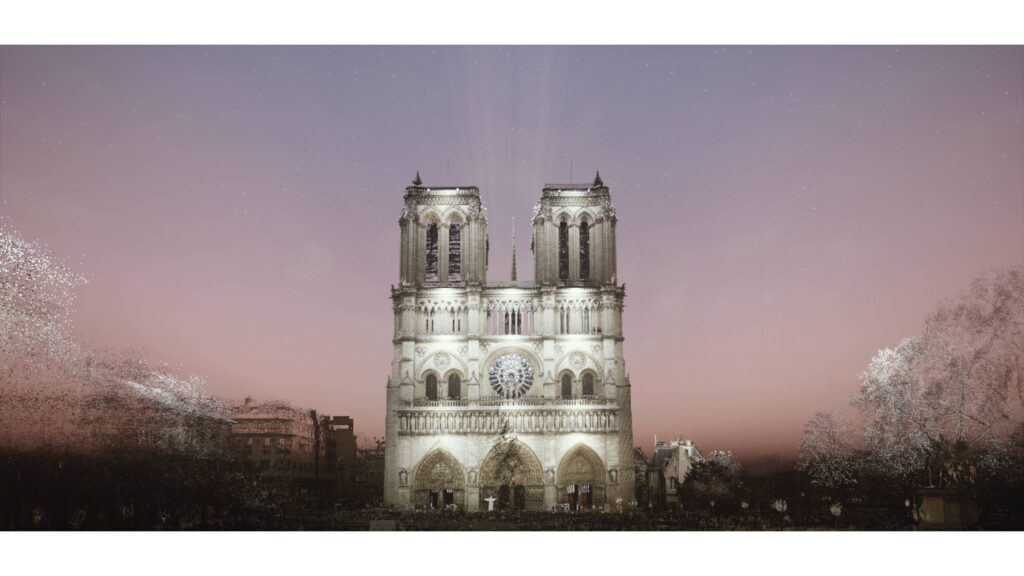
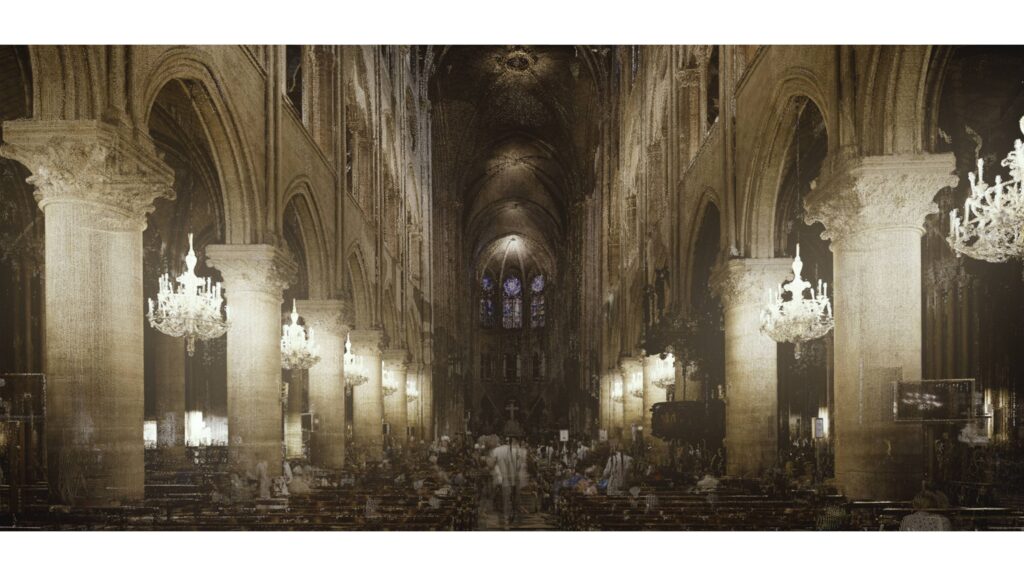




_md.jpeg)







